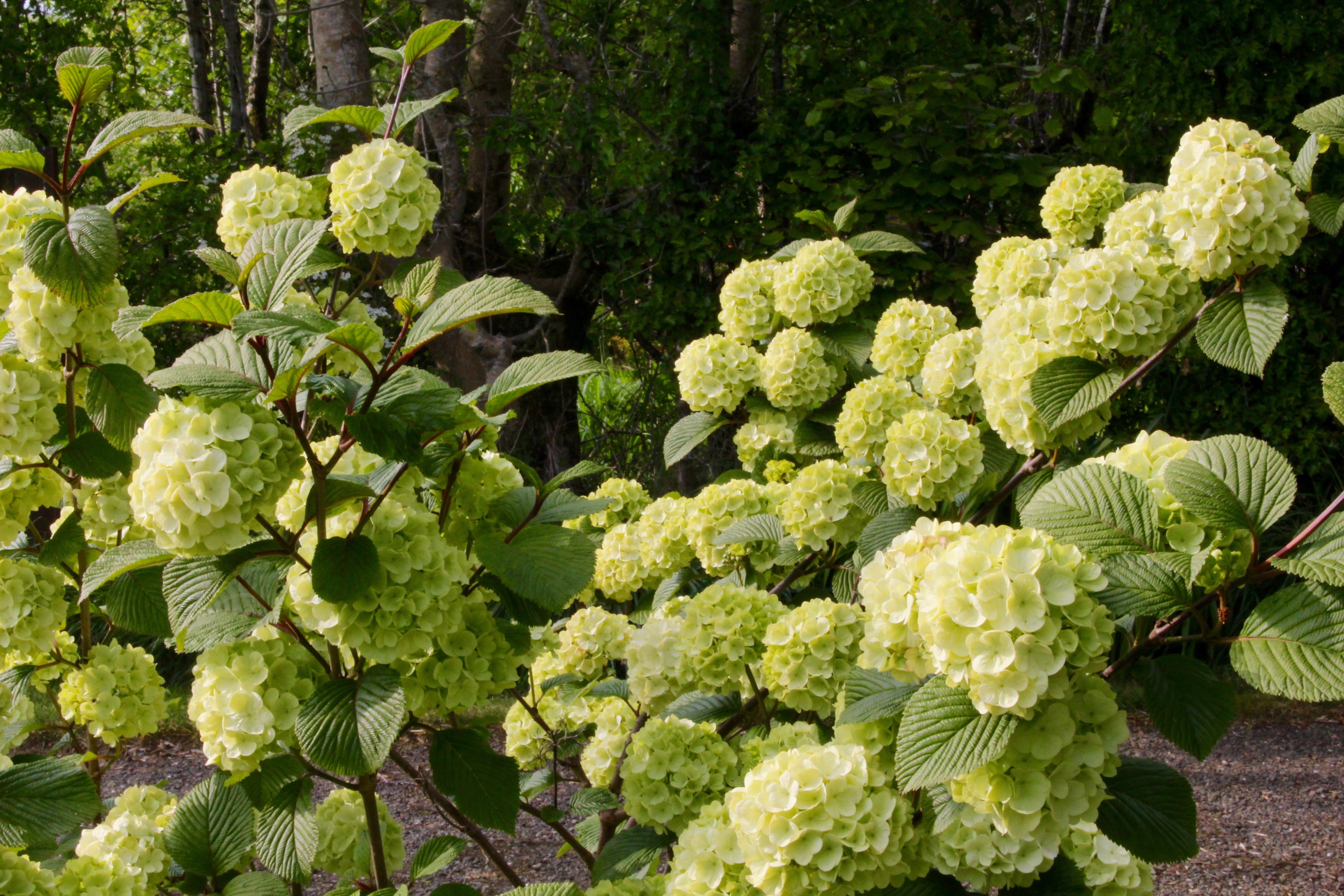Viburnum plicatum f. plicatum 'Rotundifolium'
Approx. 0.5 litre pot
About this cultivar:
Viburnum plicatum f. plicatum 'Rotundifolium' is a bit of a mystery plant to us. We can't find out much about its history - which is unusual for a viburnum. However it is obviously a japanese snowball type - much like a lime-green 'Popcorn' AND it grows away in what is quite a shady area in our garden, just look at the photos taken at a rare sunny interval!
- Position: Full sun, partial shade
- Soil: Almost any soil, grows well in Ballyrobert
- Flowers: April, May, June
- Other features: Grows well in Ballyrobert
- Hardiness: Fully hardy, grows well in Ballyrobert, H6 - Hardy in all of UK and northern Europe (-20 to -15°C)
- Habit: Clump forming, bushy
- Foliage: Deciduous
- Height: 100 - 200 cm (3.5 - 6.5 ft) Prune!
- Spread: 100 - 200 cm (3.5 - 6.5 ft) Prune!
- Time to full growth: 10 to 20 years
- Plant type: Herbaceous Perennial, shrub, tree
- Colour: Green, white
- Goes well with: Clematis
About this genus:
Viburnum is a genus of about 150–175 species of shrubs or (in a few species) small trees in the moschatel family, Adoxaceae. The member species are native throughout the temperate Northern Hemisphere, with a few species extending into tropical montane regions in South America. Long popular in gardens one species, Viburnum tinus, was found depicted in the ruins of Pompeii – specially in a fresco in the House of the Wedding of Alexander. The genus name is what the romans called Viburnum lantana.
Viburnums are quite varied but generally bloom in April and May. They vary in their height, spread, and style of flower but are similar in preferring sun and part shade and in being disease and pest resistant. They will grow almost anywhere that isn’t waterlogged, and they can usually be controlled by pruning. Often they are paired with clematis (to add summer flowering interest)
While most flowers are unscented, those that are fragrant are wonderfully so. Some species also have a fringe of large, showy sterile flowers around the perimeter of the corymb to act as a pollinator target. An interesting source of diversity in the viburnums comes with the leaf shape and texture. The fruit is often also of visual interest, with red, to dark purple to black berries, which often serve as an important food source for birds.
Thus such diverse, tough, easy to grow, beautiful, disease resistant plants are ubiquitous in gardens. I once heard that if you can’t name an attractive shrub in a garden then ‘Viburnum’ is not a bad guess! Val Bourne has said “Every garden should contain at least one spring-flowering viburnum” and I couldn’t agree more.
The Tyrolean Iceman, the well-preserved-in-ice natural mummy of a man who lived between 3400 and 3100, was found with long, straight shoots of some viburnum. Presumably these shoots were used for arrows, however I like to think he was a pre-historic gardener just doing a spot of pruning…






